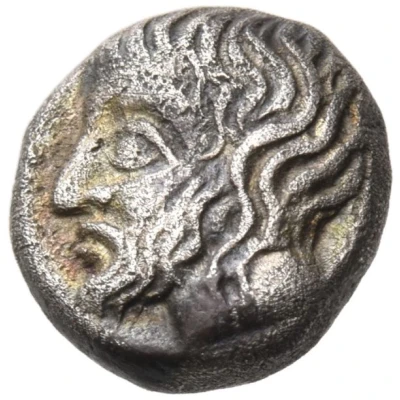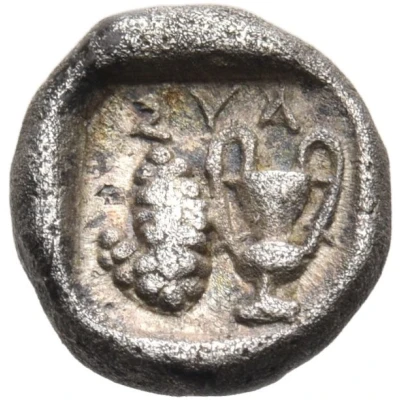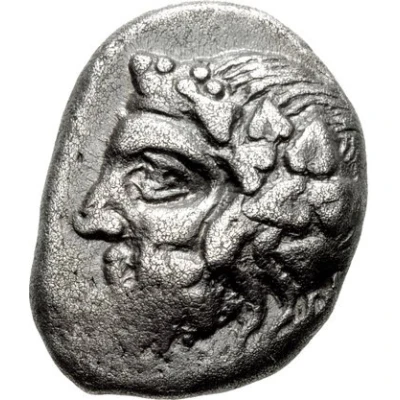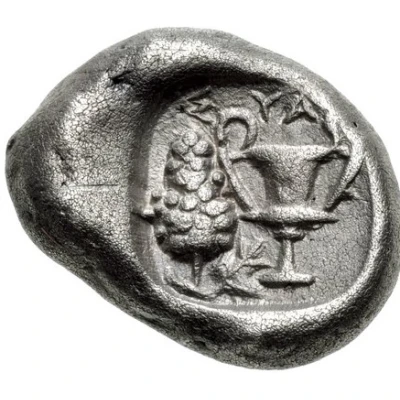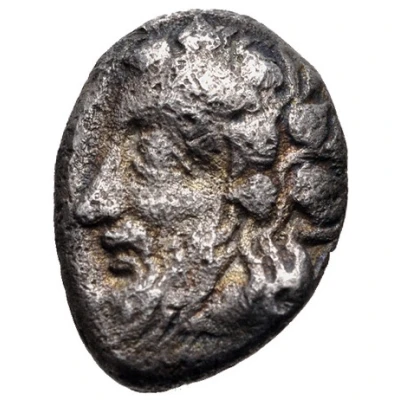
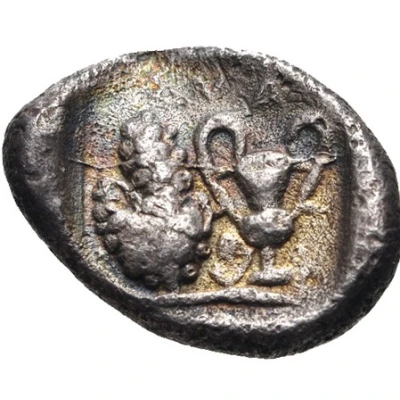

© Classical Numismatic Group, Inc.
Hemidrachm 400 BC - 370 BC
| Silver | 2.04 g | 10.0 mm |
| Issuer | Syangela (Caria) |
|---|---|
| Type | Standard circulation coin |
| Years | 400 BC - 370 BC |
| Value | Hemidrachm (½) |
| Currency | Drachm |
| Composition | Silver |
| Weight | 2.04 g |
| Diameter | 10.0 mm |
| Shape | Round (irregular) |
| Technique | Hammered, Incuse |
| Demonetized | Yes |
| Updated | 2024-10-10 |
| Numista | N#170368 |
|---|---|
| Rarity index | 100% |
Reverse
Kantharos with the letter Σ-YA above. To the left, an inverted grape bunch on vine with leaf and all within incuse square with rounded corners
Script: Greek
Interesting fact
The Hemidrachm coin from Syangela (Caria) was used as a form of currency in the ancient Greek city of Syangela, which was located in the region of Caria (now modern-day Turkey). The coin features an image of a lion's head on one side and an inscription on the other side that reads "ΣΥΑΓΓΕΛΑΙΩΝ" (Syangelaion), indicating its origin and authenticity. Despite its small size, the coin was valued at 2.04 grams of silver, making it a significant amount of money in ancient times. It's fascinating to think that this coin was used in everyday transactions and played a vital role in the economy of the ancient city. The fact that it has survived for centuries and is still studied and admired today is a testament to the rich history and culture of the ancient Greeks.
